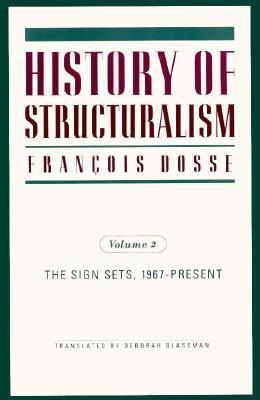Simone de Beauvoir: The Mandarins (1954–) [EN, ES, RU]
Filed under fiction | Tags: · 1940s, 1950s, existentialism, feminism, france, paris, philosophy, politics

In her famous novel, The Mandarins, Simone de Beauvoir takes an unflinching look at Parisian intellectual society at the end of World War II. In fictionally relating the stories of those around her – Jean-Paul Sartre, Albert Camus, Arthur Koestler, Nelson Algren – de Beauvoir dissects the emotional and philosophical currents of her time. At once an engrossing drama and an intriguing political tale, The Mandarins is the emotional odyssey of a woman torn between her inner desires and her public life.
First published in French as Les Mandarins, Gallimard, 1954
English edition
Translated by Leonard M. Friedman
First published in English in 1956
Publisher Harper, London, 2005
With an Introduction by Doris Lessing
ISBN 0007203942
The Mandarins (English, trans. Leonard M. Friedman, 1956/2005, EPUB)
Los Mandarines (Spanish, PDF’d HTML)
Мандарины (Russian, trans. Наталья Полторацкая and Нина Световидова, 2005)
François Dosse: History of Structuralism, 2 vols. (1991–) [BR-PT, EN, ES]
Filed under book | Tags: · 1940s, 1950s, 1960s, 1970s, anthropology, history, language, linguistics, literary theory, marxism, philosophy, psychoanalysis, semiotics, sociology, structuralism, unconscious


“Claude Lévi-Strauss, Roland Barthes, Jacques Lacan, Louis Althusser, Jacques Derrida, and Michel Foucault—the ideas of this group of French intellectuals who propounded structuralism and poststructuralism have had a profound impact on disciplines ranging from literary theory to sociology, from anthropology to philosophy, from history to psychoanalysis. In this long-awaited translation, History of Structuralism examines the thinkers who made up the movement, providing a fascinating elucidation of a central aspect of postwar intellectual history.
François Dosse tells the story of structuralism from its beginnings in postwar Paris, a city dominated by the towering figure of Jean-Paul Sartre. The work of Saussure became the point of departure for a group of younger scholars, and the outcome was not only the doom of Sartre as intellectual leader but the birth of a movement that would come to reconfigure French intellectual life and would eventually reverberate throughout the Western world.
Dosse provides a readable, intelligible overall account, one that shows the interrelationship among the central currents of structuralism and situates them in context. Dosse illuminates the way developments in what are usually distinct fields came to exert such influence on each other, showing how the early structuralists paved the way for later developments and for recent discourses such as postmodernism. The cast of characters related by Dosse includes those mentioned above as well as Roman Jakobson, Julia Kristeva, Pierre Bourdieu, Gilles Deleuze, Félix Guattari, Tzvetan Todorov, and many others. Chapters are devoted to major figures, and Dosse has done extensive interviews with the major and minor figures of the movement, furnishing an intellectual history in which historical players look back at the period.
This first comprehensive history of the structuralist movement is an essential guide to a major moment in the development of twentieth-century thought, one that provides a cogent map to a dizzying array of personalities and their ideas. It will be compelling reading for those interested in philosophy, literary theory, sociology, anthropology, linguistics, and psychoanalysis.”
First published in French as Histoire du structuralisme, Éditions La Découverte, Paris, 1991, 1992
English edition
Translated by Deborah Glassman
Publisher University of Minnesota Press, 1997
ISBN 0816622418, 9780816622412 & 0816623716, 9780816623716
488 & 534 pages
Publisher (EN)
História do estruturalismo I (BR-Portuguese, trans. Álvaro Cabral, 1993, added on 2024-1-20)
História do estruturalismo II (BR-Portuguese, trans. Álvaro Cabral, 1994, added on 2024-1-20)
History of Structuralism, 1: The Rising Sign, 1945-1966 (English, trans. Deborah Glassman, 1997, via falsedeity)
History of Structuralism, 2: The Sign Sets, 1967-Present (English, trans. Deborah Glassman, 1997)
Historia del estructuralismo I (Spanish, trans. María del Mar Llinares, 2004)
Historia del estructuralismo II (Spanish, trans. María del Mar Llinares, 2004)
David Jenemann: Adorno in America (2007)
Filed under book | Tags: · 1930s, 1940s, 1950s, biography, critical theory, culture industry, Frankfurt school, philosophy, united states

“The German philosopher and cultural critic Theodor W. Adorno was one of the towering intellectual figures of the twentieth century, and between 1938 and 1953 he lived in exile in the United States. In the first in-depth account of this period of Adorno’s life, David Jenemann examines Adorno’s confrontation with the burgeoning American “culture industry” and casts new light on Adorno’s writings about the mass media. Contrary to the widely held belief—even among his defenders—that Adorno was disconnected from America and disdained its culture, Jenemann reveals that Adorno was an active and engaged participant in cultural and intellectual life during these years.
From the time he first arrived in New York in 1938 to work for the Princeton Radio Research Project, exploring the impact of radio on American society and the maturing marketing strategies of the national radio networks, Adorno was dedicated to understanding the technological and social influence of popular art in the United States. Adorno carried these interests with him to Hollywood, where he and Max Horkheimer attempted to make a film for their Studies in Prejudice Project and where he befriended Thomas Mann and helped him craft his famous novel Doctor Faustus. Shuttling between insightful readings of Adorno’s theories and a rich body of archival materials—including unpublished writings and FBI files—Jenemann paints a portrait of Adorno’s years in New York and Los Angeles and tells the cultural history of an America coming to grips with its rapidly evolving mass culture.
Adorno in America eloquently and persuasively argues for a more complicated, more intimate relationship between Adorno and American society than has ever been previously acknowledged. What emerges is not only an image of an intellectual in exile, but ultimately a rediscovery of Adorno as a potent defender of a vital and intelligent democracy.”
Publisher University of Minnesota Press, 2007
ISBN 0816648093, 9780816648092
243 pages

